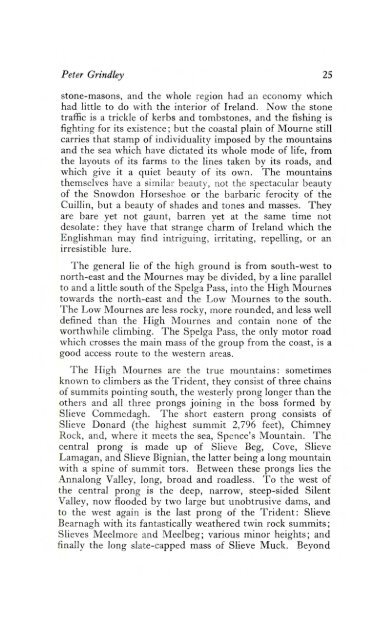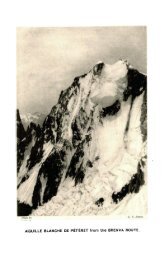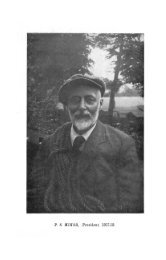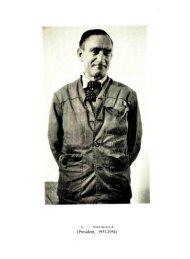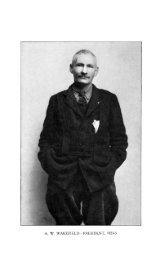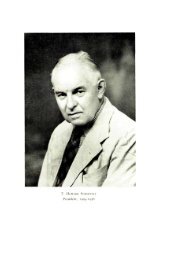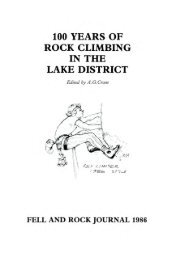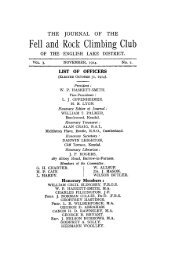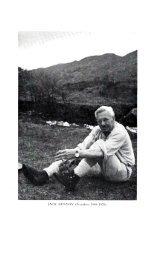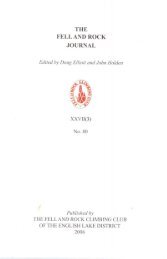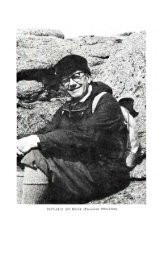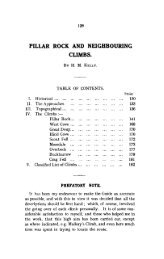Year of publication 1960 - Fell and Rock Climbing Club
Year of publication 1960 - Fell and Rock Climbing Club
Year of publication 1960 - Fell and Rock Climbing Club
You also want an ePaper? Increase the reach of your titles
YUMPU automatically turns print PDFs into web optimized ePapers that Google loves.
Peter Grindley 25stone-masons, <strong>and</strong> the whole region had an economy whichhad little to do with the interior <strong>of</strong> Irel<strong>and</strong>. Now the stonetraffic is a trickle <strong>of</strong> kerbs <strong>and</strong> tombstones, <strong>and</strong> the fishing isfighting for its existence; but the coastal plain <strong>of</strong> Mourne stillcarries that stamp <strong>of</strong> individuality imposed by the mountains<strong>and</strong> the sea which have dictated its whole mode <strong>of</strong> life, fromthe layouts <strong>of</strong> its farms to the lines taken by its roads, <strong>and</strong>which give it a quiet beauty <strong>of</strong> its own. The mountainsthemselves have a similar beauty, not the spectacular beauty<strong>of</strong> the Snowdon Horseshoe or the barbaric ferocity <strong>of</strong> theCuillin, but a beauty <strong>of</strong> shades <strong>and</strong> tones <strong>and</strong> masses. Theyare bare yet not gaunt, barren yet at the same time notdesolate: they have that strange charm <strong>of</strong> Irel<strong>and</strong> which theEnglishman may find intriguing, irritating, repelling, or anirresistible lure.The general lie <strong>of</strong> the high ground is from south-west tonorth-east <strong>and</strong> the Mournes may be divided, by a line parallelto <strong>and</strong> a little south <strong>of</strong> the Spelga Pass, into the High Mournestowards the north-east <strong>and</strong> the Low Mournes to the south.The Low Mournes are less rocky, more rounded, <strong>and</strong> less welldefined than the High Mournes <strong>and</strong> contain none <strong>of</strong> theworthwhile climbing. The Spelga Pass, the only motor roadwhich crosses the main mass <strong>of</strong> the group from the coast, is agood access route to the western areas.The High Mournes are the true mountains: sometimesknown to climbers as the Trident, they consist <strong>of</strong> three chains<strong>of</strong> summits pointing south, the westerly prong longer than theothers <strong>and</strong> all three prongs joining in the boss formed bySlieve Commedagh. The short eastern prong consists <strong>of</strong>Slieve Donard (the highest summit 2,796 feet), Chimney<strong>Rock</strong>, <strong>and</strong>, where it meets the sea, Spence's Mountain. Thecentral prong is made up <strong>of</strong> Slieve Beg, Cove, SlieveLamagan, <strong>and</strong> Slieve Bignian, the latter being a long mountainwith a spine <strong>of</strong> summit tors. Between these prongs lies theAnnalong Valley, long, broad <strong>and</strong> roadless. To the west <strong>of</strong>the central prong is the deep, narrow, steep-sided SilentValley, now flooded by two large but unobtrusive dams, <strong>and</strong>to the west again is the last prong <strong>of</strong> the Trident: SlieveBearnagh with its fantastically weathered twin rock summits;Slieves Meelmore <strong>and</strong> Meelbeg; various minor heights; <strong>and</strong>finally the long slate-capped mass <strong>of</strong> Slieve Muck. Beyond


